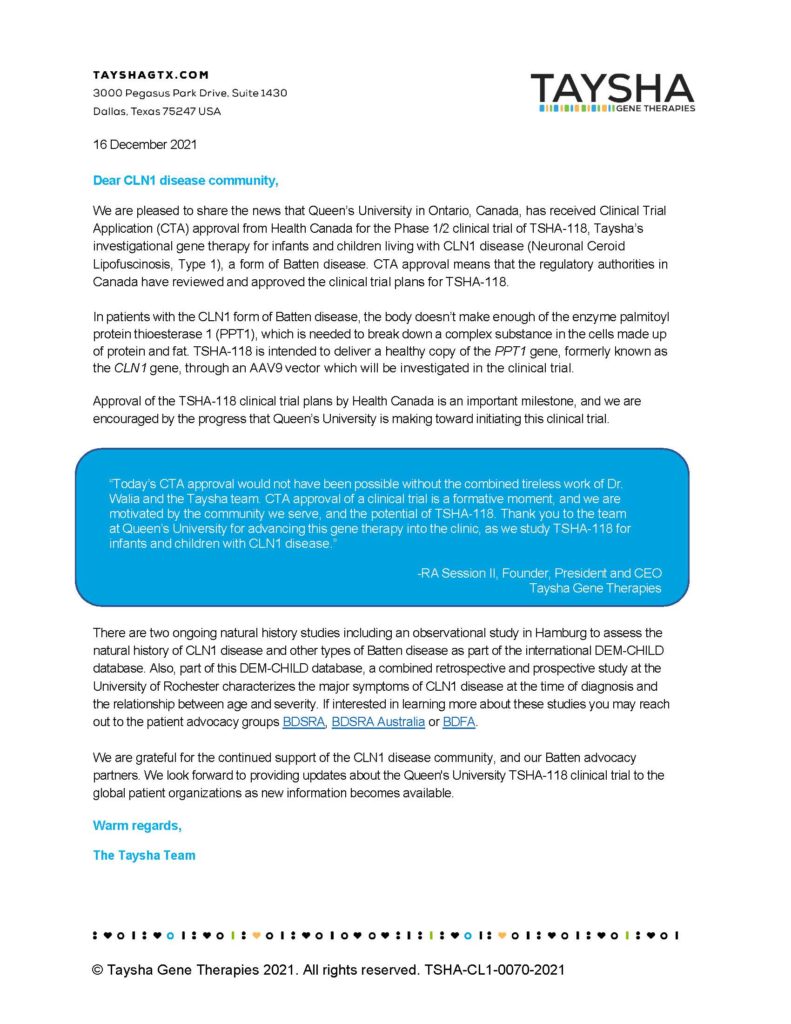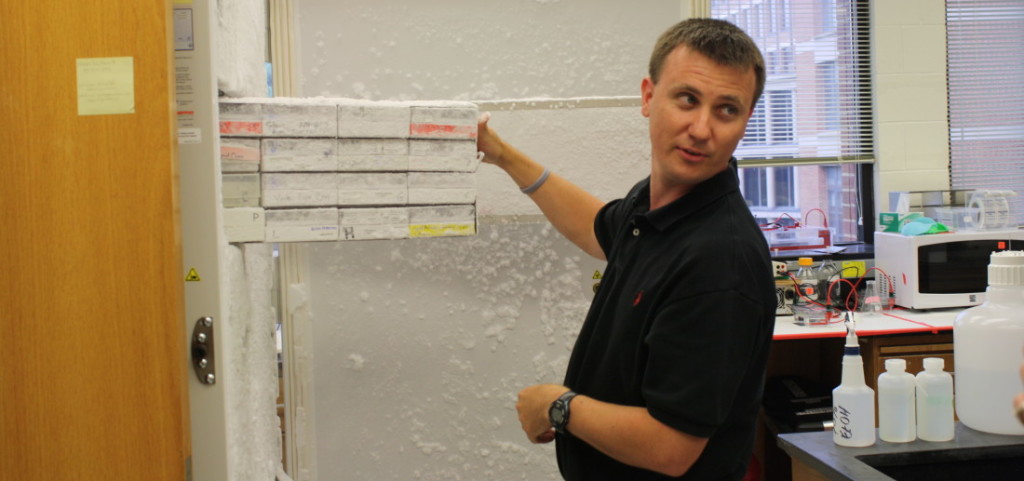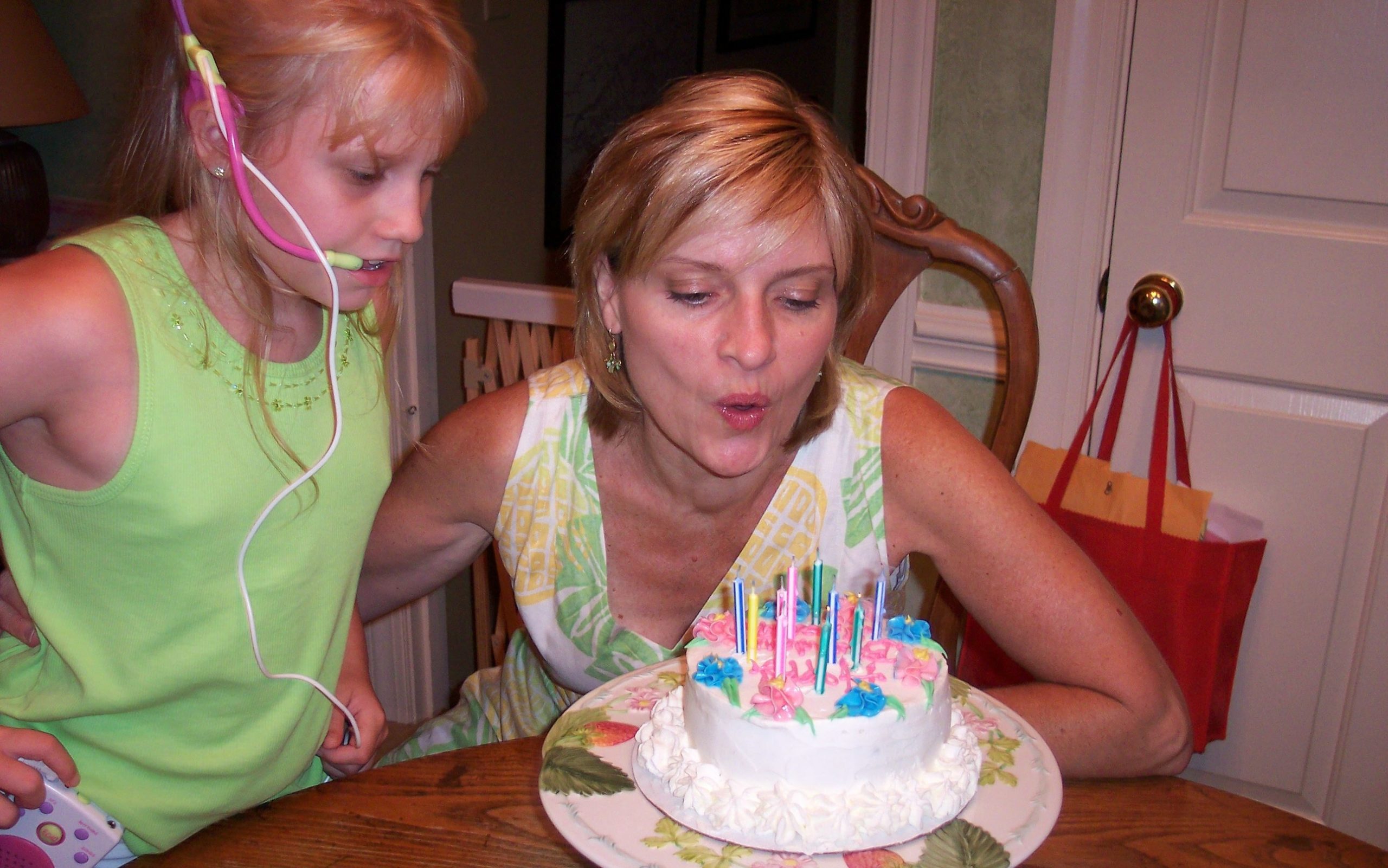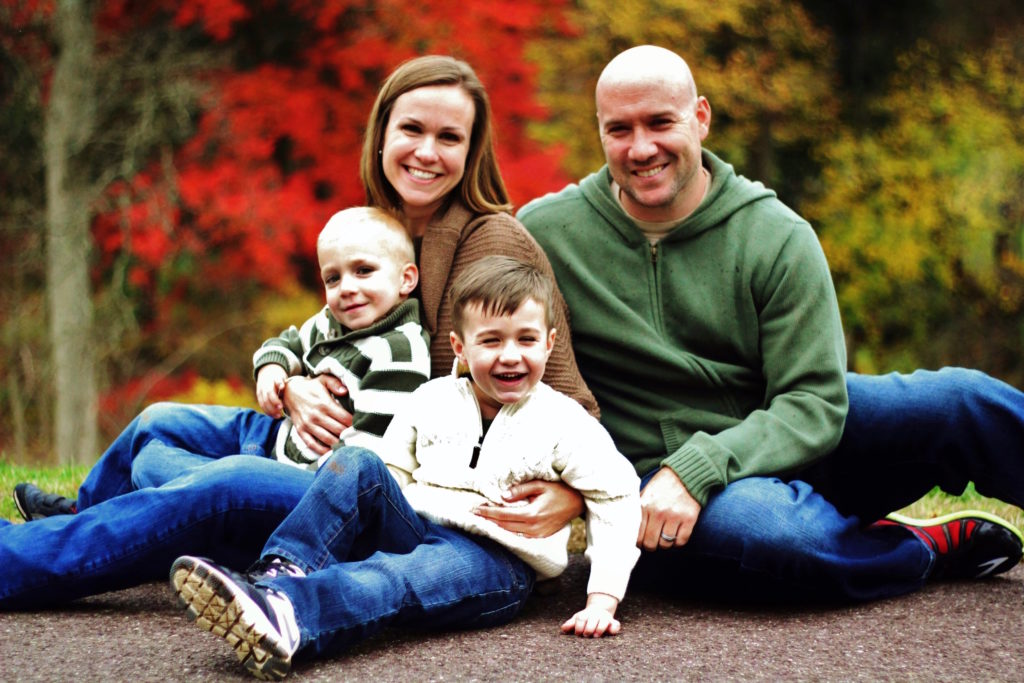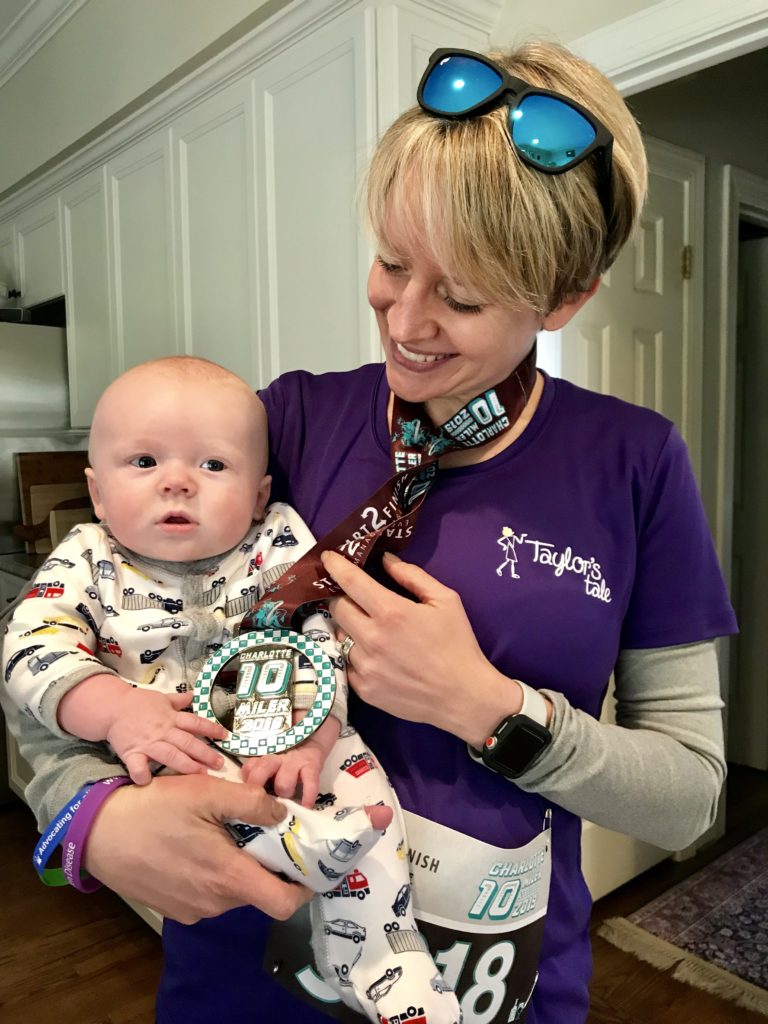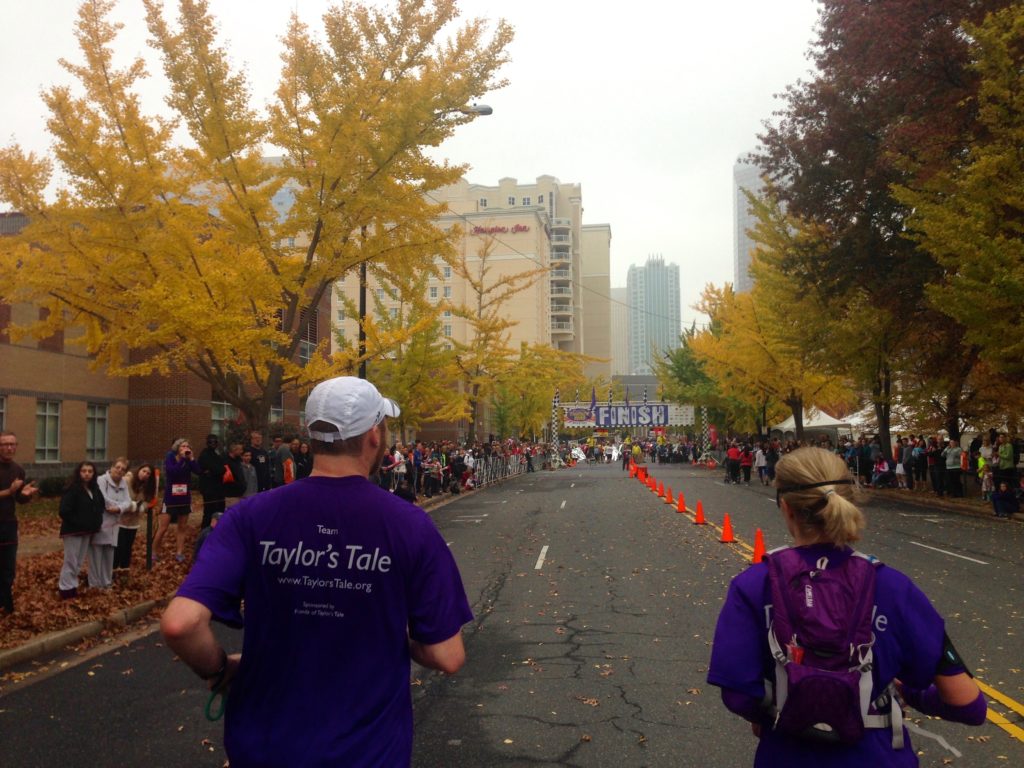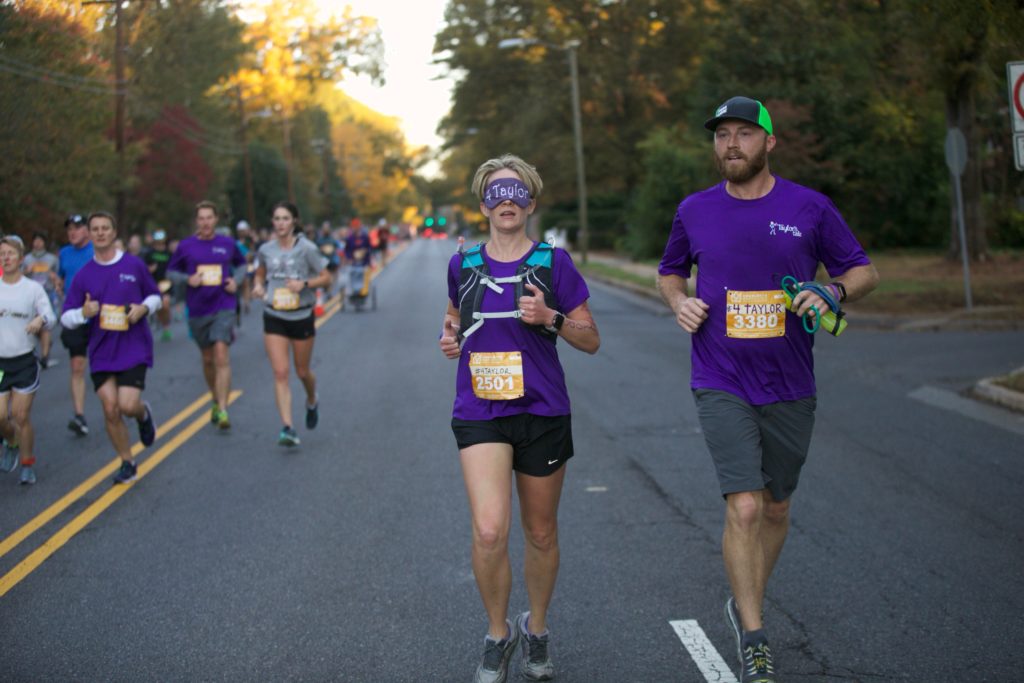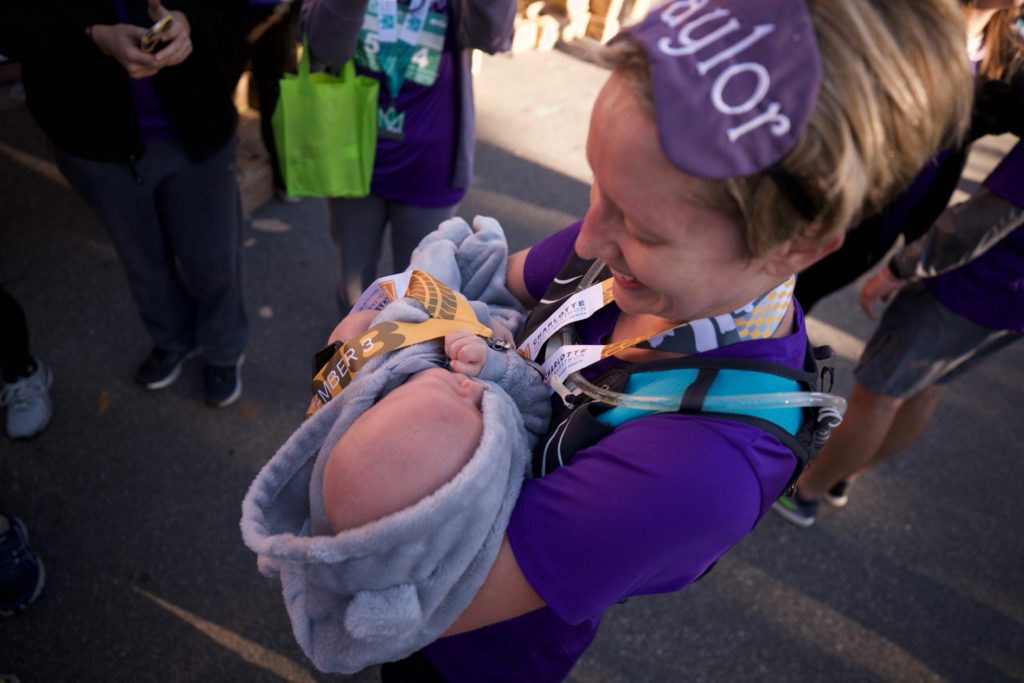Since Taylor’s diagnosis in 2006, I’ve worked hard to help give CLN1 disease (Batten disease) patients — children like my sister — a meaningful treatment. Today, I’m happy to share that a patient with CLN1 disease was recently treated with the investigational gene therapy candidate TSHA-118 — a program that began with a dream and a mother’s intuition.
When Taylor’s Tale Co-Founder and President Sharon King first met Dr. Steven Gray, she saw great promise in the young investigator’s work. That’s why, months later, she and I met with Dr. Gray to discuss the possibility of adapting the novel approach for CLN1 disease. It’s why, on Rare Disease Day in 2013, I had the pleasure of announcing that we had secured the necessary funding to kick off a CLN1 disease study at the University of North Carolina.
Much has changed since that hopeful day. I haven’t held my late sister’s hand or heard her laugh in more than five long years. This fight has always been about her.
But while TSHA-118 came too late to save Taylor’s life, it stands as her lasting legacy. My heart is happy for the patient recently treated and their family. I’m proud that my family and our dedicated volunteers and donors had a critical hand in making it possible. And for as long as I live, I’ll continue to advocate so that others may benefit in the future.
The CLN1 disease patient was treated under an individual-patient investigator-initiated IND request from RUSH University Medical College. Taysha Gene Therapies is not currently evaluating TSHA-118 for CLN1 disease. However, the company continues to evaluate potential partnerships and opportunities to further the CLN1 program development.
We’ll be watching. In the meantime, read the official announcement from Taysha.

